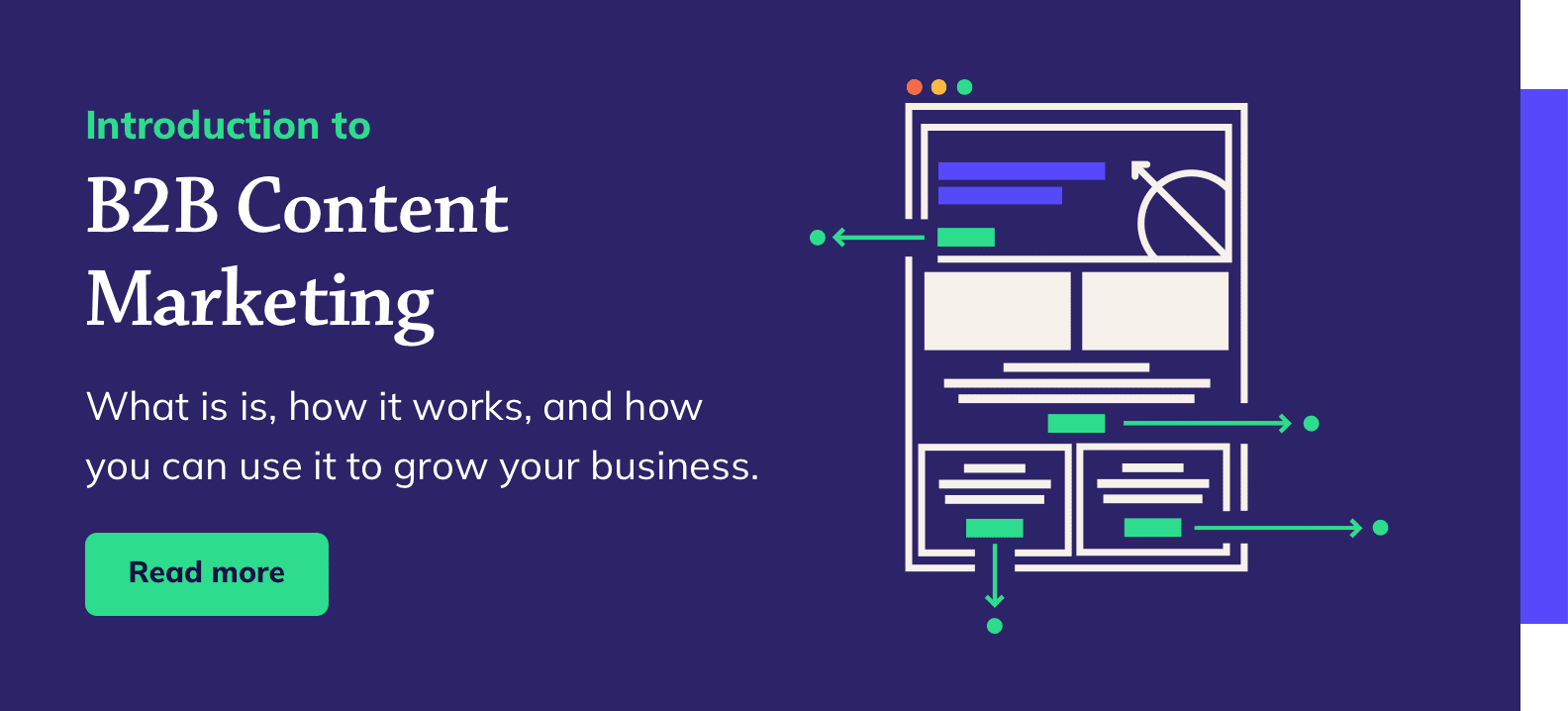With the right content strategy in place, any B2B website can attract, engage, and delight customers – filling your sales pipeline with relevant opportunities.
During our latest webinar, How to make your website your most effective marketing asset, we explore the tactics in-house marketers can deploy to get their website delivering leads and driving business growth.
Webinar: How to make your website your most effective marketing asset
In this webinar, Senior Account Strategist, Sacha Gauthier and Senior Content Writer, Robert White explain how websites can be key marketing assets when supported by effective B2B content marketing. We explore:
- What makes an effective website
- How to use content marketing to boost performance
- How to research, structure, and leverage content
- How to keep technical maintenance issues from undoing effective digital marketing
Here's a recap of our key points.
Effective websites fulfil their intended function
In B2B, a website's primary goal should be growing the pipeline.
growing the pipeline – To contribute to pipeline growth, your website needs to engage leads of an appropriate quality that they create new sales opportunities.
The performance of a website can be measured using the following metrics:
- Qualified leads
- Conversion rates
- Traffic acquisition
These core metrics match the journey of inbound lead generation. Start at the bottom of the funnel, by first measuring how many qualified leads are turning into sales opportunities. While the other two metrics are critical to success, it's the bottom line that matters to your stakeholders.
Organic search traffic provides long term marketing benefits
Website traffic can come from many sources. But in our experience, organic search plays a huge part in website performance and long term business growth.
- Reach a new audience. Unlike direct, social, or referral traffic, organic search doesn’t rely on existing networks.
- Respond to user intent. It allows you to target visitors who have specific needs or problems, instead of targeting based on demographic/firmographic qualities.
- Grow without scaling cost. A well-ranking organic content piece will consistently acquire traffic without having to pay per visit (like PPC).
Your content needs to be well-structured, not just well-written
Most in-house marketers know that you need to target keywords and you need to create content to grow organic traffic. What many people don't realise is that the reason this isn't working as well as they'd like is because the structure of their content isn't optimised.
Well-linked, strategically structured content creates a positive customer experience and improves SEO results. Internal linking and effective calls to action play a key role in turning high visitor numbers into converting, qualified leads.
- Topic clusters. Create rich and engaging groups of relevant content for visitors.
- Strategic linking. Empower key service pages to rank for competitive commercial keywords by leveraging link equity.
- Contextual calls to action. Control the customer journey, encouraging the right action at the right time.
Consider un-gating valuable content
The question of whether or not to gate content is one that still plagues many marketers. Traditional inbound methodology teaches us to always gate your most valuable content, because acquiring the details of prospects is so important.
Gated content – a piece of content (commonly an ebook/whitepaper) that can only be accessed via a form. To get the content, you have to trade your contact information.
Our experience, however, doesn't support that approach. Valuable, informative content can do more for you if you un-gate it. Not only does it provide a wealth of SEO value and a pillar around which to organise supporting content, it also creates a friendlier customer experience.
Don't trade contact details for information. Trade for convenience.
Giving people the opportunity to download your content in .pdf form so they can read offline at their leisure is an effective strategy for many B2B businesses. So many people download eBooks and whitepapers for research, rather than as an indication of purchase. They're curious rather than committed. Forcing conversion points on visitors just leads to bad experiences and low quality leads.
Identify and prioritise technical issues that impact your marketing goals
Digital solutions are now integral to the marketing world. And marketers are increasingly expected to be responsible for the technical maintenance of their websites.
To manage this effectively, you need to know what's gone wrong and prioritise addressing problems based on your overall marketing goals. For example, if you want to increase conversion rates, prioritise fixing broken forms before worrying about improper Schema.
Create a traffic light system for any technical issues that arise and leverage automated tools, like SEMRush and ContentKing to manage the monitoring.
Additional resources
- Inbound Marketing Vs. Outbound Marketing
- 5 SEO quick wins to improve blog traffic in a blink
- 5 ways to optimise content marketing ROI
- Anatomy of an effective pillar page
- 39 Call-to-Action Examples You Can't Help But Click
Longer reads
- B2B SEO: A step-by-step guide
- How to Do Keyword Research for SEO: A Beginner's Guide
- Introduction to B2B Content Marketing
- Guide to B2B blogging
- The Ultimate Guide to Landing Pages




